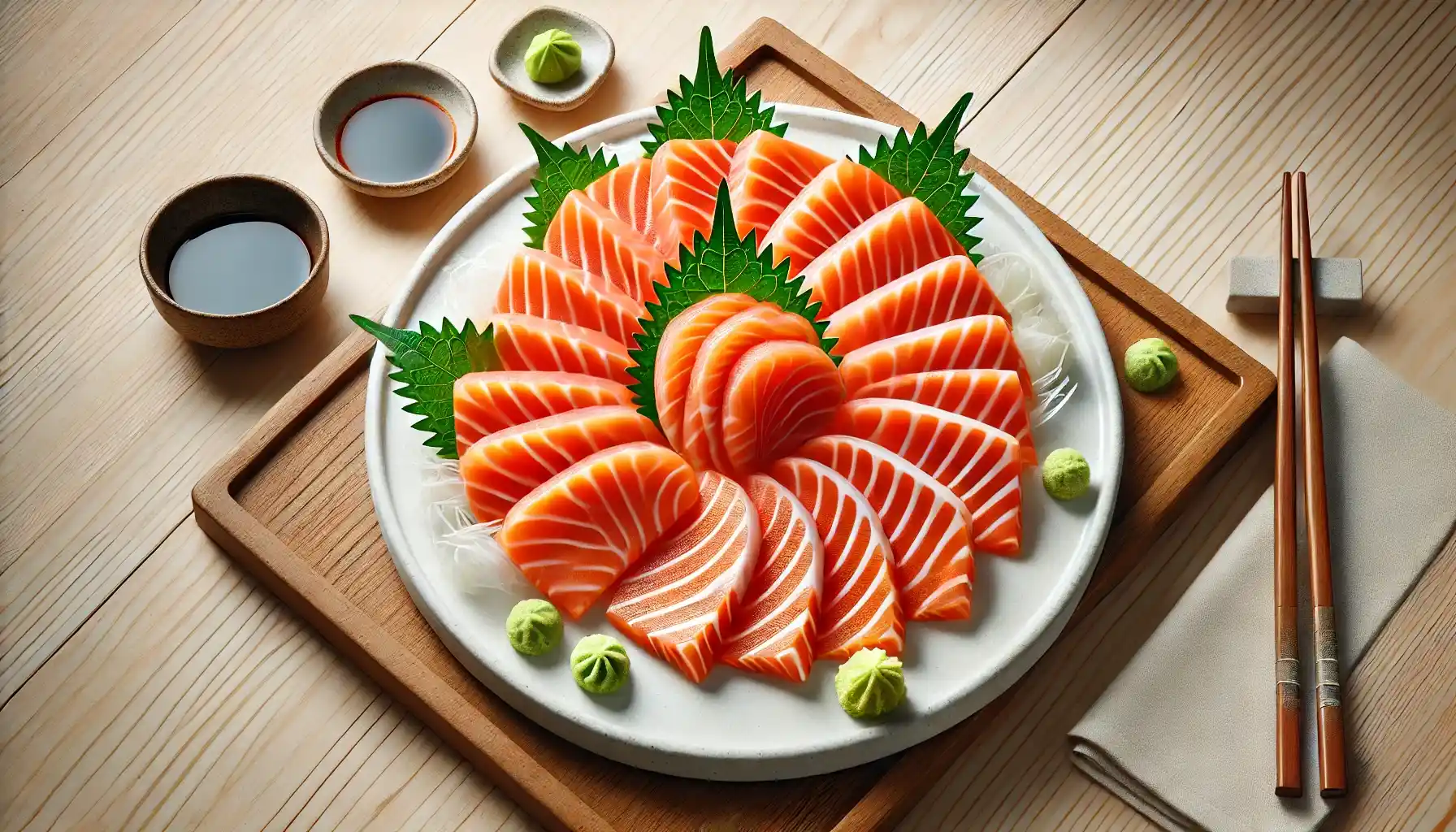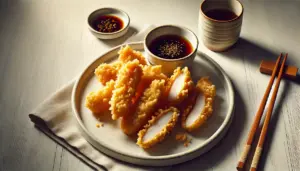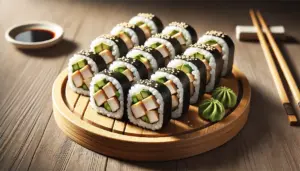When it comes to Japanese cuisine, Sashimi is one of the purest ways to enjoy fresh seafood. Among the various types of sashimi, Salmon Sashimi is a favorite for its buttery texture, vibrant color, and rich flavor. This dish consists of thinly sliced raw salmon served with a few simple accompaniments to highlight the natural taste of the fish.
Creating salmon sashimi at home may seem intimidating, but with the right technique and fresh ingredients, you can easily recreate this elegant dish. In this article, we’ll take you through everything you need to know about making perfect Salmon Sashimi from selecting the best fish to presenting it beautifully.
Why Salmon Sashimi?
Sashimi is all about celebrating the quality and freshness of the fish. Salmon sashimi, with its tender, melt-in-the-mouth texture and slightly sweet flavor, is a popular choice for those who are new to sashimi as well as experienced sushi lovers. It’s simple, healthy, and elegant, making it perfect for appetizers, light meals, or special occasions.
Ingredients Needed for Salmon Sashimi
Before we dive into the step-by-step instructions, let’s look at the essential ingredients for making salmon sashimi:
- Sashimi-Grade Salmon: 300g (boneless, skinless fillet)
- Soy Sauce: For dipping
- Wasabi: A small amount (optional)
- Pickled Ginger: For a refreshing contrast
- Lemon Wedges: For a touch of acidity (optional)
- Daikon Radish: Thinly sliced or grated (for garnish)
- Shiso Leaves: Optional, for serving
Step-by-Step Guide to Making Salmon Sashimi
- Choose the Right Salmon
- Selecting the right salmon is crucial for sashimi. Look for high-quality, sashimi-grade salmon that’s specifically meant for raw consumption. This guarantees that the fish has been properly handled and stored to minimize the risk of parasites or contamination. Tip: If you’re unsure, ask your fishmonger for advice on selecting the freshest sashimi-grade fish.
- Prepare the Salmon
- Rinse the salmon fillet under cold water and gently pat it dry with paper towels. Place the salmon on a clean cutting board. Make sure your knife is sharp, as this will ensure clean and smooth cuts.
- Slice the Salmon
- Using a long, sharp knife, slice the salmon against the grain into thin, even pieces. The ideal thickness for sashimi slices is around ¼ inch (about 6mm). Make sure to cut in a single motion without sawing back and forth, as this helps maintain the integrity of the fish. Tip: Wipe the knife with a damp cloth between slices to keep the cuts clean and precise.
- Plate the Sashimi
- Arrange the salmon slices neatly on a plate. You can fan them out or layer them slightly for an elegant presentation. Add a small mound of pickled ginger, a dollop of wasabi, and a few shiso leaves or thinly sliced daikon radish for garnish.
- Serve with Dipping Sauce
- Pour a small amount of soy sauce into a dipping dish. Optionally, you can add a little wasabi to the soy sauce and mix it for a spicier kick. Serve the sashimi immediately, as the freshness of the fish is key to the dish’s quality.
Common Mistakes to Avoid When Making Salmon Sashimi
While making sashimi is simple, there are some common mistakes that can affect the final dish:
- Using the Wrong Type of Salmon: Always choose sashimi-grade salmon to ensure safety and freshness. Regular supermarket salmon is not suitable for raw consumption.
- Dull Knife: A sharp knife is essential for making clean cuts without damaging the delicate texture of the fish.
- Cutting Against the Grain: Slicing against the grain helps create tender pieces of fish. Cutting along the grain can result in chewy sashimi.
Variations of Salmon Sashimi
Once you’ve mastered the basic salmon sashimi, you can experiment with different garnishes and flavor combinations:
- Salmon Tataki: Lightly sear the edges of the salmon with a blowtorch or hot pan for a caramelized exterior and raw interior.
- Citrus Ponzu Sashimi: Serve the salmon sashimi with a citrus-based ponzu sauce for a zesty and refreshing twist.
- Spicy Salmon Sashimi: Drizzle the salmon with a bit of spicy mayo or chili oil for an extra kick.
Nutritional Benefits of Salmon Sashimi
Salmon sashimi isn’t just delicious; it’s also packed with nutritional benefits:
- High in Omega-3 Fatty Acids: Salmon is an excellent source of heart-healthy omega-3s, which help reduce inflammation and support brain health.
- Rich in Protein: A great source of lean protein, salmon sashimi provides essential amino acids for muscle growth and repair.
- Low in Calories: When served with light accompaniments like soy sauce and ginger, sashimi is a low-calorie option that’s satisfying and healthy.
Tips for Storing and Handling Salmon Sashimi
If you’re not using the salmon immediately, here are some tips for storing and handling it safely:
- Refrigeration: Keep the sashimi-grade salmon refrigerated at 32°F to 39°F (0°C to 4°C) and consume it within 24 hours for maximum freshness.
- Handling: Always use clean utensils and a sanitized cutting board to prevent cross-contamination. Work quickly to minimize the time the fish spends at room temperature.
Final Thoughts
Salmon sashimi is a dish that celebrates the quality and purity of the fish. It’s simple, elegant, and perfect for showcasing the natural flavor and texture of fresh salmon. By following this Salmon Sashimi Recipe, you can recreate a restaurant-quality dish in the comfort of your own home.
So why not treat yourself to a taste of Japanese cuisine and enjoy the freshness of homemade salmon sashimi?




